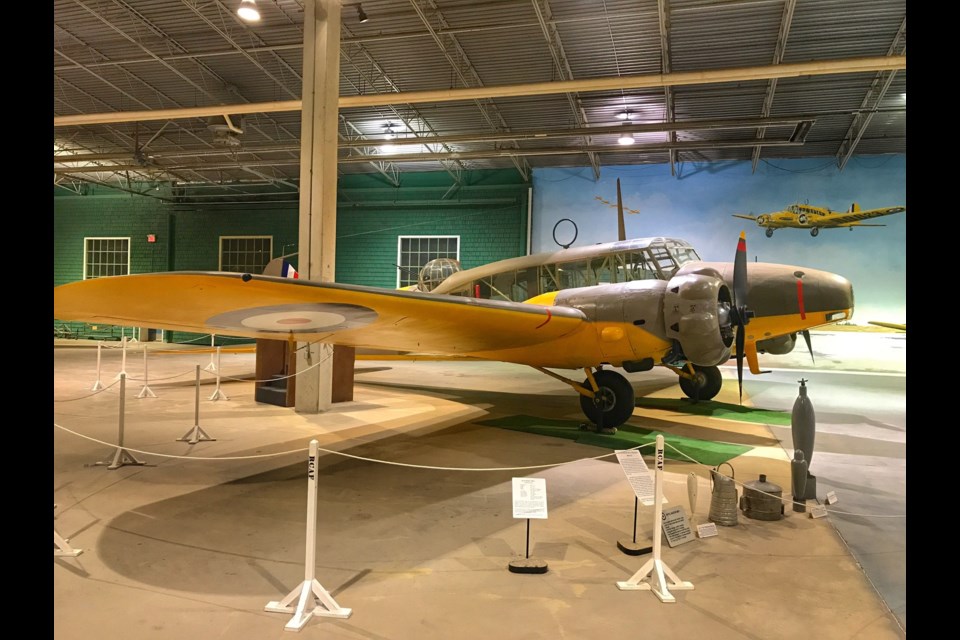When the Second World War started on Sept. 1, 1939, Great Britain knew it needed to train airmen and pilots safely but couldn’t do it because of how close the island was to the battlefield.
So, the United Kingdom looked to Canada for help.
The Great White North had an abundance of air training space beyond the range of enemy aircraft and excellent climatic conditions for flying. Moreover, the country had immediate access to American industry — especially parts and aircraft — and could transport men and airplanes to England via the North Atlantic.
So, Great Britain signed an agreement on Dec. 17, 1939, with Canada, New Zealand and Australia to create the British Commonwealth Air Training Plan (BCATP).
The plan’s objective was to train pilots, navigators, bomb aimers, wireless operators, air gunners, and flight engineers. As a result, more than 131,000 crewmen — including French, Czechs, Norwegians, Poles, Belgians and Dutch — were trained between 1939 and 1945, making this one of Canada’s great contributions to Allied victory.
It also led United States President Franklin Roosevelt to call Canada the “aerodrome of democracy.”
The plan’s total cost was roughly $2.2 billion — or $41.5 billion adjusted for inflation today.
The Western Development Museum — Moose Jaw branch discussed the British Commonwealth Air Training Plan during its Nov. 30 Coffee Club gathering. Karla Rasmussen, public relations and education co-ordinator, gave the presentation.
Training details
Student pilots and crewman spent their time at air training bases. These bases were composed of dark green-shingled buildings and bright yellow training aircraft — the latter a hallmark of the program.
Training schools focused on specific skills: flying, bombing and gunnery, air observation, air navigation, radio operations, or flight engineering.
Of the 107 training schools across the country, Saskatchewan had 21 such venues in 14 communities like Caron or Mossbank. This was the second-highest number of training schools in Canada.
Trainees began their military careers at a Manning Depot, where they learned to bathe, shave, shine boots, polish buttons, maintain their uniforms, and behave properly. They also received two hours of physical education daily and instruction in marching, rifle drill, foot drill, saluting and other routines.
After five weeks, a selection committee decided whether the trainee would go into the aircrew or groundcrew stream.
Initial training school
Wireless air gunner candidates went directly to a wireless school. Air observers and pilot aircrew candidates went to an initial training school (ITS).
Pilot and air observer candidates began their 26- or 28-week training program with four weeks at an ITS. They studied theoretical subjects and were given various tests to pass.
Theoretical studies included navigation, theory of flight, meteorology, duties of an officer, air force administration, algebra and trigonometry. Tests included an interview with a psychiatrist, the four-hour-long M2 physical examination, a session in a decompression chamber, a test flight in a link trainer, and academics.
At the end of the course, the postings were announced.
Flying schools
An elementary flying training school (EFTS) gave a trainee 50 hours of basic flying instruction on a simple trainer like the De Havilland Tiger Moth, Fleet Finch, or Fairchild Cornell.
Civilian flying clubs under contract to the Royal Canadian Air Force (RCAF) operated the elementary schools, while most instructors were civilians.
Graduates of the EFTS’s learn-to-fly program went to a service flying training school for 16 weeks. For the first eight weeks, the trainee was part of an intermediate training squadron; for the next six weeks, an advanced training squadron; and for the final two weeks at a bombing and gunnery school.
The service schools were military establishments run by the RCAF or the Royal Air Force (RAF).
Intensive learning
There were two types of service flying training schools (SFTS). Trainees in the fighter pilot stream went to an SFTS like No. 32 Moose Jaw, where they trained in the North American Harvard. Trainees in the bomber, coastal or transport pilot stream went to an SFTS like No. 4 Saskatoon, where they learned multi-engine techniques in an Avro Anson or Cessna Crane.
The bombing and gunnery school taught bomb aiming and aerial machine gunnery to air observers, bomb aimers, and wireless air gunners.
These schools required large areas to accommodate their bombing and gunnery ranges and were often located near water, such as No. 2 Mossbank near Old Wives Lake.
Air observers were later called navigators. For recruits in this stream, the training path after initial training school was eight weeks at an air observer school, one month at a bombing and gunnery school, and one month at a navigation school.
Civilians operated the air observer schools, while the instructors were members of the RCAF. The basic navigation technique throughout the war was dead reckoning — a method of navigation relying on estimating one’s current track, ground speed and position based on earlier known positions — and visual pilotage. Several other tools were also used.
Famous planes
Pilots and aircrews trained on several planes: the Harvard, Tiger Moth, Avro Anson, Fairchild Cornell, Cessna Crane, Fairey Battle, Bristol Bolingbroke, and Westland Lysander.
The Harvard was considered the iconic symbol of the BCATP and an outstanding aircraft of its era. Thus, the RCAF chose it as the advanced single-engine trainer for the program.
It also served as a transitional aircraft for pilots who had trained on Tiger Moths, Fleet Fawns or Cornells and needed to advance their skills so they could fly combat aircraft such as Hurricanes or Spitfires.
Canada produced 3,350 Harvards, more than any other type.
After the Second World War, some hangers from closed training schools were moved and became community centres, hockey arenas or part of museums. However, No. 32 Service Flying Training School at Moose Jaw was eventually modernized and became 15 Wing Moose Jaw.




